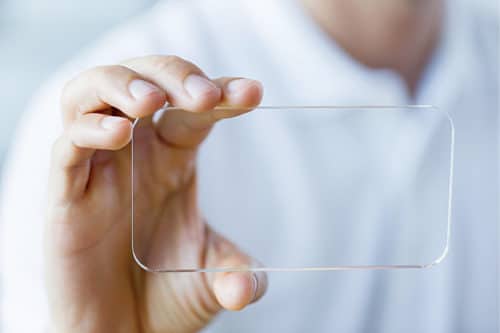As smartphones near commoditisation, original equipment manufacturers are seeking new ways to differentiate their products. Today, smartphones are predominantly made with metal cases in aluminium, stainless steel, titanium or magnesium. These metals act as an amplifier for the antennae while providing superior mechanical performance, durability, and a high-quality aesthetic and feel. Yet, the next generation of smartphones will trend toward glass casing, which will allow some truly thin and elegant designs.
One of the main hurdles with glass smartphones is that these may not have the mechanical integrity needed to stand up to the dropping, tumbling and extensive daily use that smartphones must endure. In addition, glass is not a suitable material for antenna amplification. Smartphones have two antennae for cellular transmission, as well as antennae for GPS, Wi-Fi and Bluetooth. The cellular antennae are connected to the frame (and metal case), which acts as an amplifier.
To overcome these hurdles, glass cellphones are being designed with metal frames. To ensure good reception efficiency, the metal frame is separated into three parts—upper, lower and a grounded central portion—which must be electrically isolated from each other.
Nano mould technology (NMT) provides direct metal-to-polymer bonding. By etching the surface of the metal, a deeply textured surface is created at micro and nano levels, enabling optimal polymer infiltration and interlock. In addition to high electrical resistance, the material needs to achieve a strong bond without trapping air gaps, to prevent it from delaminating under stress or in poor conditions. It must also endure the high heat of processes used to decorate the metal, such as anodisation, vacuum metallisation, physical vapour deposition or electrodeposition.

There is a new material, based on high-performance ForTii Ace polymer, which has been designed specifically for NMT. With the highest mechanical strength and glass transition temperature (Tg) of all polyphthalamides, this material matches polyether ether ketone (PEEK) in temperature and chemical resistance, while outperforming it in stiffness at high processing temperatures. The material’s unique chemistry ensures excellent flow for sufficient filling of micro and nano pores, and superior crystallisation behaviour for exceptionally high NMT bonding forces.
Two dedicated NMT grades have been developed for bonding to titanium and stainless steel alloys: ForTii NMX33 and ForTii Ace NMX5. For applications that rely on dimensional stability, heat and UV resistance or dielectrics, ForTii Ace provides designers with the freedom to realise the next-generation of glass-encased smartphones, as well as other creative metal-to-plastic bonding applications that require the highest aesthetics and material performance.






